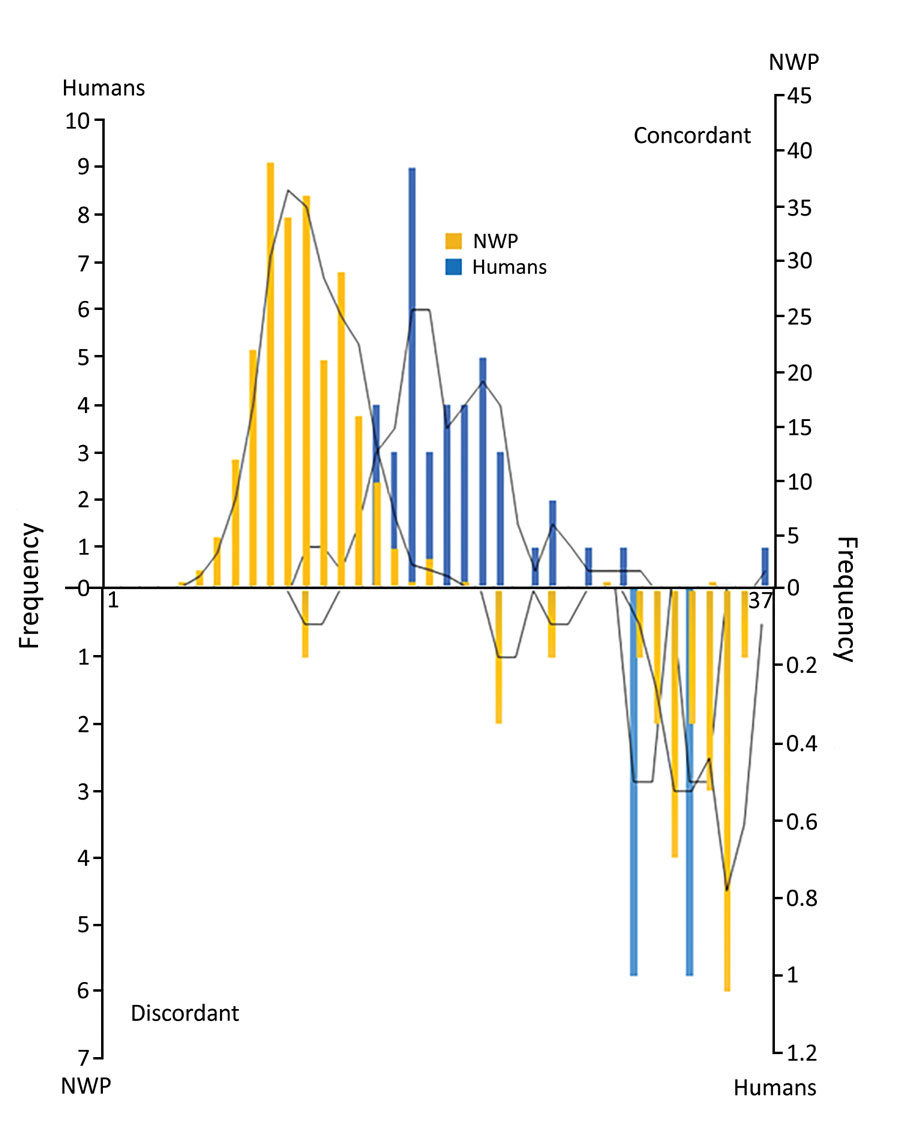Volume 27, Number 1—January 2021
Research
Differential Yellow Fever Susceptibility in New World Nonhuman Primates, Comparison with Humans, and Implications for Surveillance
Figure 2

Figure 2. Distribution of Cq values for yellow fever in humans and NWP for concordant and discordant groups, Brazil. Discordant cases had higher Cq values, indicated on right side of the lower histogram, and concordant cases had lower Cq values (higher in humans than in NWP) in the upper histogram. Concordance was determined by using immunohistochemical analysis. The y-axes indicate number of persons and the x-axes indicate Cq value. Cq, quantification cycle; NWP, New World primate.
Page created: October 05, 2020
Page updated: December 21, 2020
Page reviewed: December 21, 2020
The conclusions, findings, and opinions expressed by authors contributing to this journal do not necessarily reflect the official position of the U.S. Department of Health and Human Services, the Public Health Service, the Centers for Disease Control and Prevention, or the authors' affiliated institutions. Use of trade names is for identification only and does not imply endorsement by any of the groups named above.